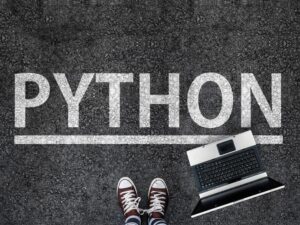‘No organization is an island’ says Slack, as it tries to extend beyond the wall of the office – and gradually erode the hold that email has over us all.
How do you keep workforces motivated and engaged after months of working from home? It’s a challenge that many businesses face as 2020 grinds on, and a topic that has been at the forefront of software companies whose remote-working tools have become the foundation of the new remote-working phenomenon.
Working from home has been something of a mixed blessing for the office-based workforce in recent months. While many have relished in the convenience of having their desk situated mere feet away from their bed, having the workplace forcibly transplanted into our homes has come with its fair share of downsides, with the lack of social interaction being amongst the primary issues.
SEE: Software as a Service (SaaS): A cheat sheet (free PDF) (TechRepublic)
“I think we’ve seen a lot of good and bad things,” Stuart Templeton, head of Slack UK, tells TechRepublic.
“We’ve got our commuting time back, and if we’re careful – and I’m not sure everyone feels positive in this regard – many remote workers feel like they have more of a work-life balance.”
The downside, says Templeton, is the greater sense of loneliness many of us have experienced as the shutters came down on our brick-and-mortar workplaces. This may be an issue that cannot be solved by chat software alone: “Despite technology such as Slack that does a really great job, it is harder to build great relationships with one another,” Templeton says.
No company has been exempt from the impact of long-term remote working on employees. With the divide between home and work life blurring, and employees reporting working longer hours than they were prior to COVID-19, employee burnout has become a very real issue for organizations.
At Slack, Templeton says the company has “practiced what we’ve preached” to customers by encouraging time for human interaction via one-on-one calls, while keeping the time spent in meetings in check.
“I think the cognitive load of video calling, if it’s all day every day, is not immaterial,” Templeton adds. “I think suggesting that some of our time is spent on the phone rather than on the video phone is probably a healthy balance.”
Slack has seen steady growth throughout the COVID-19 pandemic: profits remain elusive, the company saw sales increase 49% in Q2 and now puts its paid customer count at 130,000 – an increase of 30% year over year.
“Growth remains healthy,” says Templeton. “Our focus remains long-term customer value, ultimately. If we can help them get more value from the platform, and integrate more of their tools into a channel-based structure so that the right people can have the right information, that’s our fundamental focus.”
This, crucially, is where Slack sees itself differentiating from rival workplace-collaboration tools. While Microsoft Teams and Zoom have been battling to dominate the video-meeting space, Slack’s focus is creating office-wide chat rooms where information can be shared instantaneously, reducing our reliance on messy inboxes.
Slack is also looking beyond the office walls. Slack Connect , launched in June this year, allows teams to communicate with up to 20 others outside of their company within secure channels. The underlying idea here is that organizations working together on projects can take their communication out of siloed email inboxes and into Slack, allowing them to get work done faster.
“No organization is an island, and if channel-based communication does a great job of driving alignment and creating relationships and human connection, then why should that be limited to the boundaries of your organization?” says Templeton.
According to Templeton, 52,000 paying customers are using Slack Connect as of the most recent quarter. While he doesn’t suggest it could kill off email entirely – other technologies have tried before, of course – Templeton does see Slack Connect playing an important role in how businesses build relationships beyond the confines of a cluttered inbox.
“I often describe Slack as a replacement to email for organizations,” Templeton says.
“WhatsApp hasn’t replaced email in your personal life, or text, but it’s massively eroded it. Therefore, perhaps another lens on that statement is [that] Slack heavily erodes email for organizations. Whether or not we will see an end to email in the next years or decades, I’m not sure. But I am very aware of the shortcomings of email.”
SEE: Research: SMB IT stack decisions based on fulfilling business needs (TechRepublic Premium)
With so many remote-working tools out there, it’s inevitable that some overlap will exist – Templeton himself acknowledges this fact. When it comes to Microsoft Teams, however – arguably Slack’s number one rival – the UK boss suggests the two companies are coming at the problem from two very different angles, with Slack taking a ‘best-of-breed’ approach and Microsoft offering Teams as part of its own software bundle.
“We massively believe that best of breed technologies deliver value for customers. But more importantly, no customer relies on a single vendor,” Templeton explains.
One potential issue of using an instant-messaging platform in leu of email is the connotations such technology carries: namely, that communication is expected to be instant. With this in mind, does instant messaging in the enterprise pose a risk to productivity?
“My own point of view is that that’s not actually a technology issue – it’s a leadership issue,” says Templeton.
“The one thing that leaders should have in mind is that, these new ways of working – Slack being a channel-based messaging platform – is that just because it’s a message doesn’t render it having to be more real-time than, say, an email.
“If you’re able to respond to an email or a Slack message in real time all the time, then there is an argument to suggest that you’re not carving the time either for your own thinking, or quality work. I think that’s the leadership challenge, rather than the technology challenge.”
Also see
Source of Article




